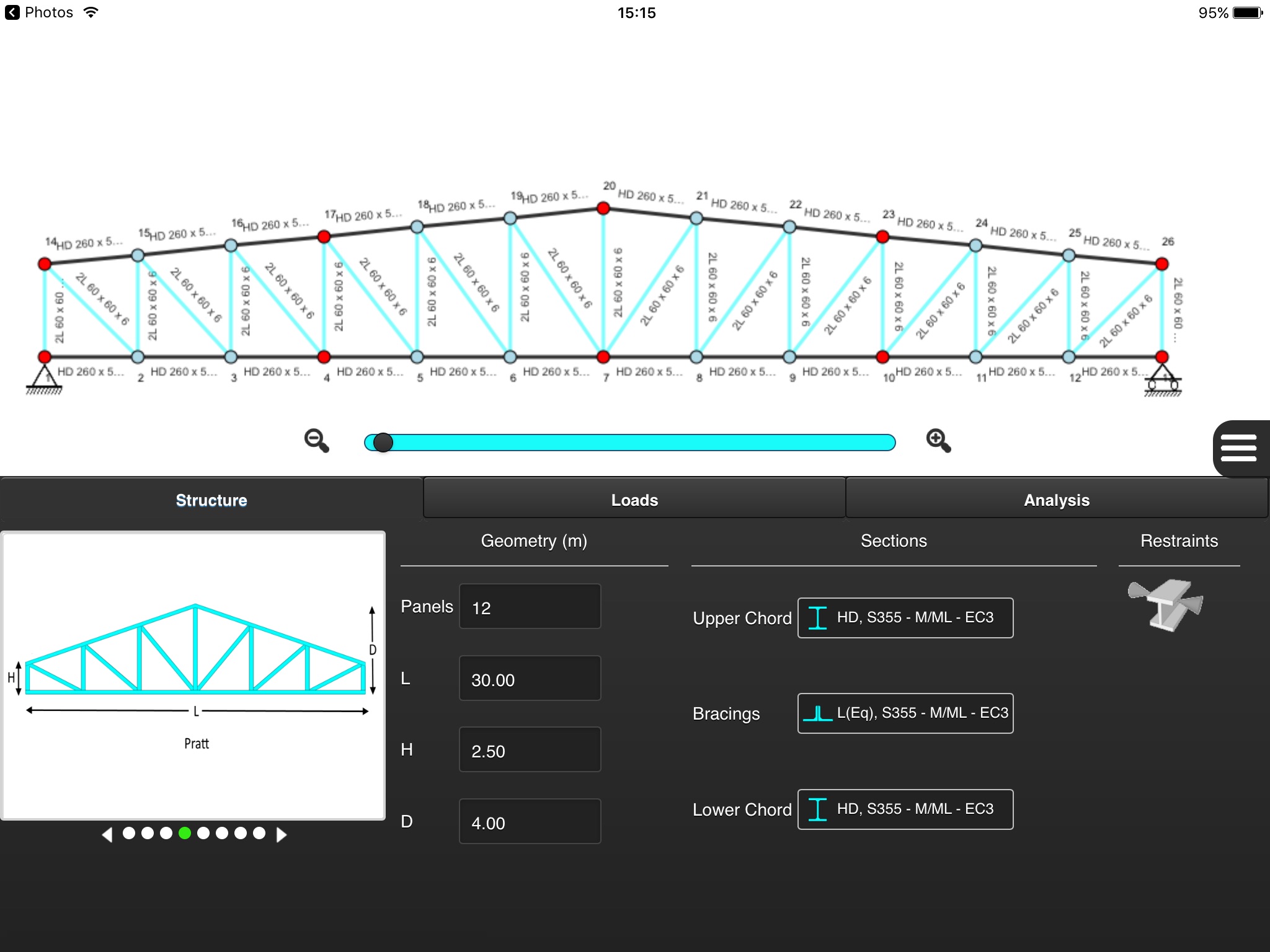
Trusses+ app for iPhone and iPad
Developer: COMPUTER CONTROL SYSTEMS ENGINEERING RESEARCH & DESIGN S.A
First release : 03 Oct 2016
App size: 11.08 Mb
Trusses+ is dedicated to the pre-design of Large Span Trusses in conformity with the European rules for steel structures (EN1993-1-1:2005)
The software can be used as an automatic pre-design tool.
Verification: based on sections imposed by the user, Trusses+ checks the design criteria of each member of a truss (upper and lower chords, bracings)
Optimization: from basic data supplied by the user (main geometry, lateral restraints and loadings), the software estimates the dimensions of the cross-section of elements of the structure
The field of application of Trusses+ is:
2 dimensional truss model, simply supported, with user defined positions of lateral restraints
Truss configurations: N-, V-, A-truss, Warren, Pratt, Warren plus, Pratt lattice & Warren lattice
Geometrical limits:
Length = min: 5m, max: 100m
Height = min: 0.2m, max: 10m
Height/Length ratio = min 1/30, max: 1/10
Program sales of ArcelorMittal for I, H, double L, and U-sections
Steel grades and standards : EN 10025-2 & 4, EN 1993-1-1, HISTAR S355&S460
Multiple loading cases with definitions of:
Distributed loads: Permanent, Imposed, Wind and Snow loads
Concentrated loads: Permanent and Imposed loads
The calculations performed according to Eurocodes are:
Automatic load combination of the elementary load cases for Ultimate Limit States (ULS) and Servicability Limit States (SLS)
Classification of sections
Verification of cross-section resistance
Verfication of the member stability: flexural buckling in-plane and out-of plane
Verification of deflection limits and estimation of natural frequencies (SLS)
The results are provided as:
vizualisation on the software interface
3 levels of details of Preliminary Design Notes, with:
Data of the truss and calculation parameters
Analysis results (reaction at supports, node displacements, internal forces)
Verification results (ULS and SLS)



